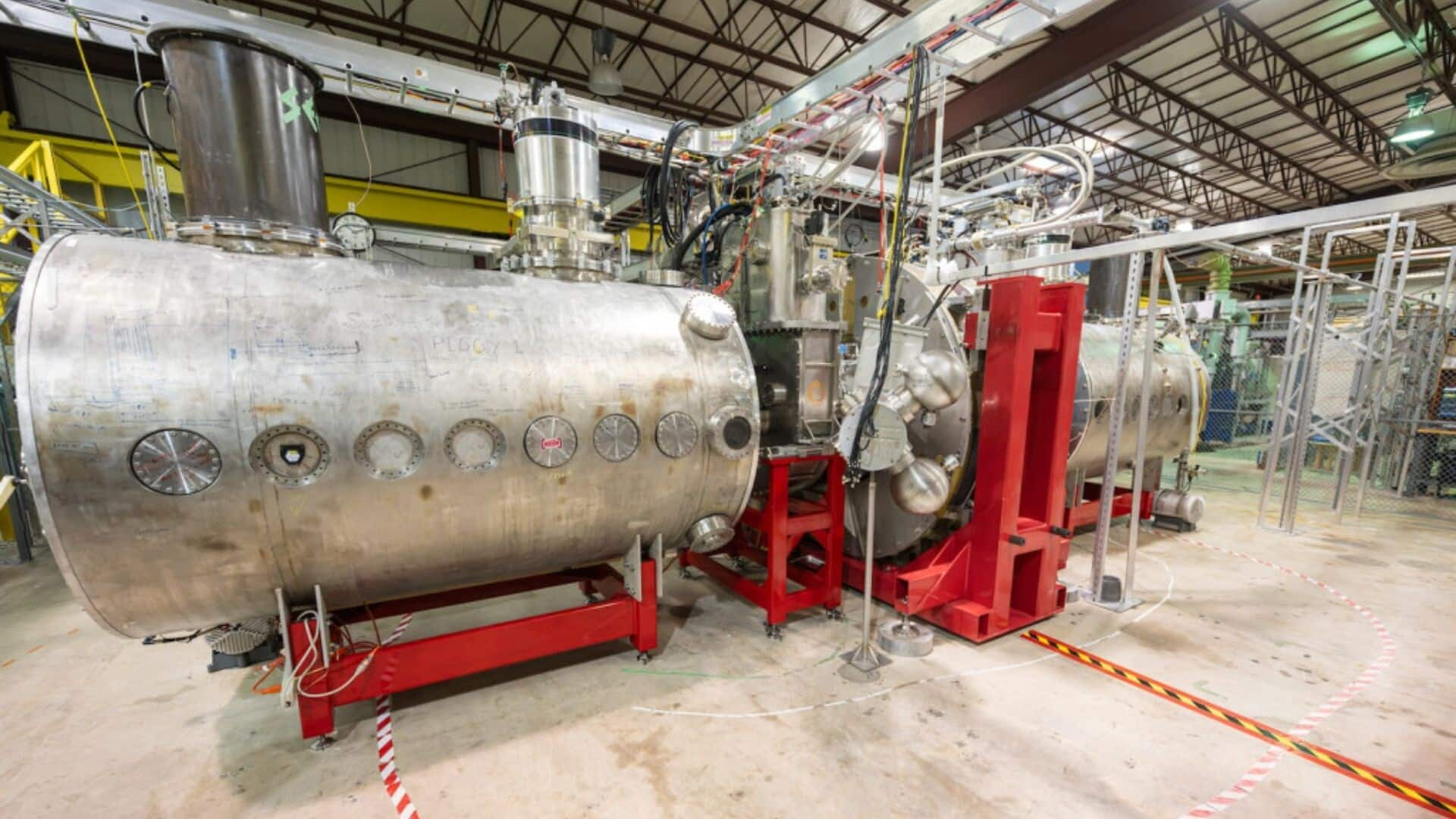
WHAM's experiment paves way for clean, carbon-free fusion power
What's the story
The Wisconsin HTS Asymmetric Mirror (WHAM), a fusion energy device developed by the University of Wisconsin-Madison (UW-Madison) team, has achieved a world record using the strongest steady magnetic field. On July 15, under the leadership of professor Cary Forest, the team generated plasma using a magnetic field strength of 17 Tesla, which is over twice as powerful as those used in high-resolution MRI scanners. This is a significant advancement toward achieving clean, carbon-free fusion power.
Future prospects
Leading to compact, low-cost fusion systems
The success of the WHAM experiment could lead to more compact and potentially cheaper fusion systems in various fields, including energy production, military, medical, industrial, and space exploration (propulsion systems). The experiment now operates as a public-private partnership between UW-Madison and Realta Fusion, which aims to commercialize mirror fusion. "Today's demonstration puts the compact magnetic mirror firmly back in the race toward commercial fusion energy," said Kieran Furlong, CEO of Realta Fusion.
Team effort
Collaboration key to fusion energy milestone
The record-breaking achievement is the result of a four-year collaboration between Realta Fusion, a UW-Madison spinoff, Massachusetts Institute of Technology (MIT), and Commonwealth Fusion Systems (CFS), with backing from the US Department of Energy. "First plasma is a crucial first step for us in that direction," Forest said, highlighting the importance of this development in the pursuit of viable fusion energy. The project has set a new standard in magnetic field strength for magnetically confined plasmas.
Technological innovation
Experiment's innovative approach
The WHAM experiment utilizes two powerful magnets at either end of a cylindrical chamber, to create a "magnetic bottle" that traps energetic plasma, increasing the likelihood of fusion reactions. Dr. Jay Anderson, co-founder of Realta Fusion and UW-Madison scientist, stated that the experiment is "setting a world record in magnetic field strength for magnetically confined plasmas and is equipped with intense heating systems while still being a hands-on experiment for both graduate and undergraduate students."
Expansion plans
Realta Fusion's future plans for commercial fusion energy
Realta Fusion, one of eight firms selected for the Department of Energy's milestone funding program, plans to develop two demonstration reactors. The first reactor, Anvil, will build upon WHAM's design to offer further data and material testing capabilities. The second reactor, Hammer, will flaunt an evolved design with multiple magnets, potentially enabling longer reactors with increased power output.
Ongoing research
WHAM team's focus on key challenges
The WHAM team will now concentrate on addressing primary challenges in plasma confinement, stability, and overall efficiency. Their findings will be necessary in determining the viability of magnetic mirror fusion as a practical energy source. The new magnets used in the experiment were provided by CFS, which is a pioneering start-up in the fusion industry.